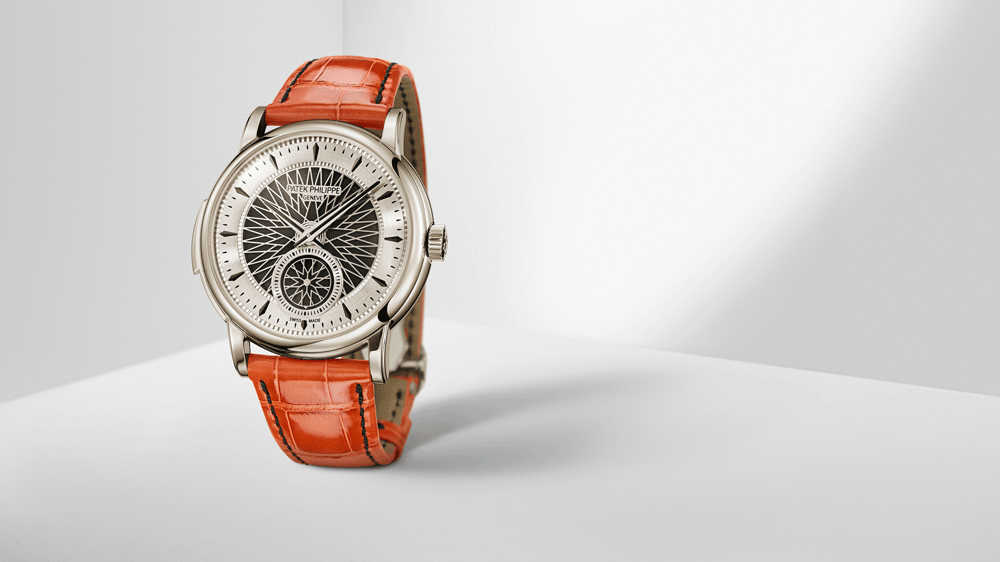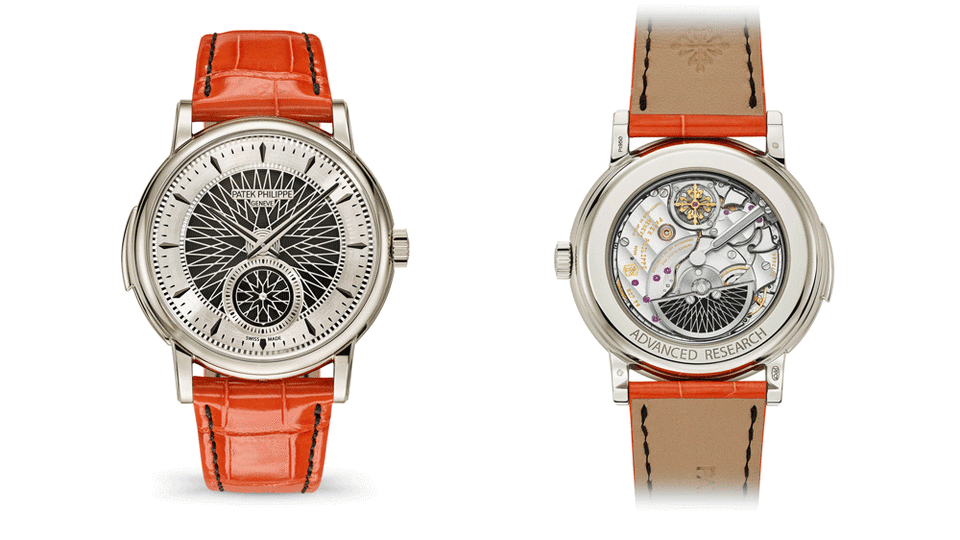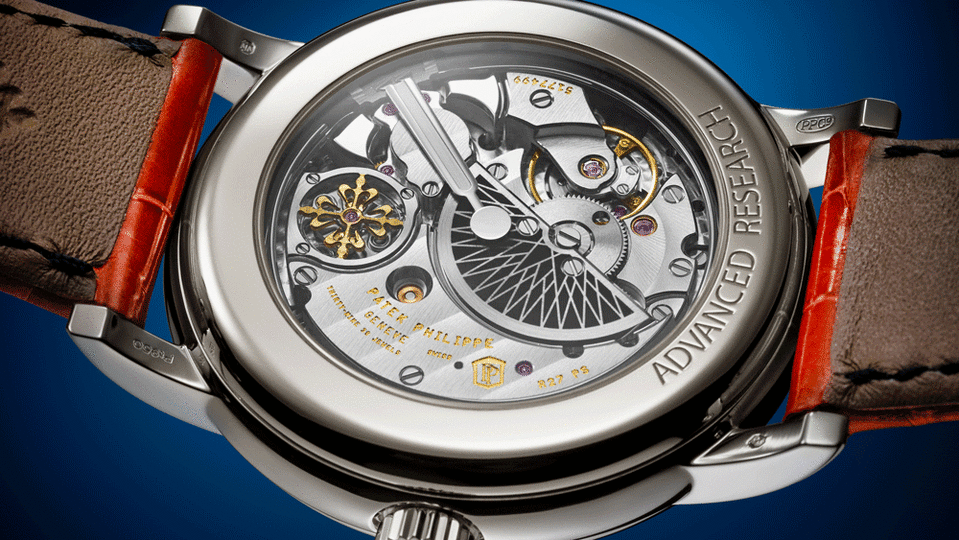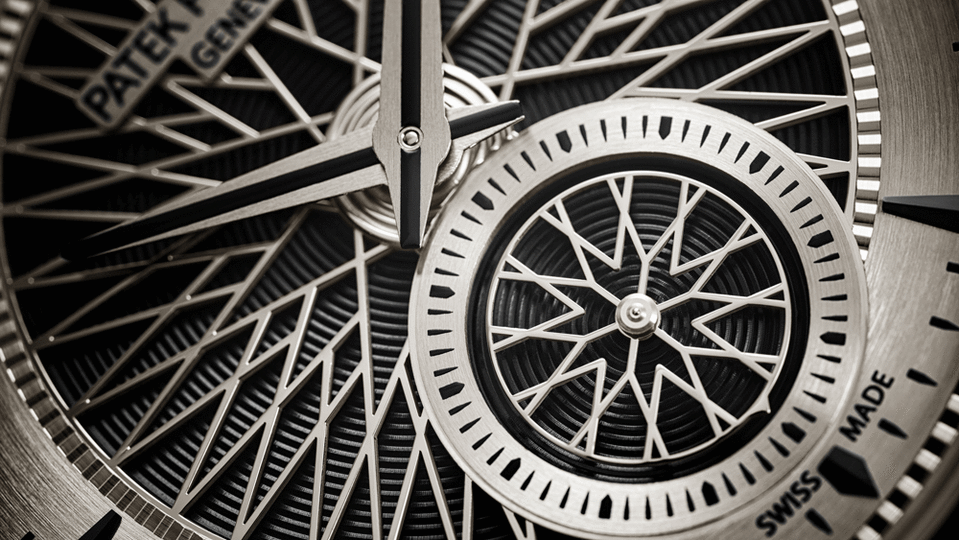Patek Philippe’s Advanced Research Team Scored 4 Patents With Its New Limited-Edition Minute Repeater

And just like that… Patek Philippe has dropped another watch to close out 2021.
Hot on the heels of its week-old Patek Philippe Tiffany & Co.-signed Ref. 5711, which scored headlines with both its introduction and the sale of one example at Phillips for a hefty $6.5 million over the weekend, the Swiss watchmaker has introduced yet another newsworthy watch. The Swiss company’s new 40 mm x 11.10 mm platinum Ref. 5750 “Advanced Research” minute repeater was designed to reinforce its technical prowess in a vastly more complicated piece.
More from Robb Report
With a Transparent Dial, Vacheron Constantin's New Complete Calendar Watch Has Nothing to Hide
Jay-Z Is Already Wearing the Impossible-to-Get Tiffany Blue Patek Philippe Nautilus
How a Former Taxi Driver Became One of the World's Most Original Clockmakers

Patek Philippe
In contrast to the sporty Nautilus, issued in a limited edition of 170, this is a high-horology reference that features four patented innovations. It was created by the company’s most skilled watchmakers in its “Advanced Research” department, an R&D division founded in 2005 to develop new technologies and concepts, that will be limited to just 15 pieces.
The new minute repeater’s claim to fame is a new sound amplifying system made possible by the addition of the fortissimo “ff” module to the brand’s existing caliber R 27 PS (first introduced in 1989). The module is made with a flexibly suspended sound lever and a 0.2 mm-thick sapphire-crystal oscillating wafer, which makes the chiming sound roughly six times more powerful (you can hear it chime in a video on Patek Philippe’s site). And that’s no small feat: according to a statement from Patek Philippe, this makes the sound roughly six times more powerful than a normal minute repeater. While you can hear the sound from a standard version up to 32 feet away, you can hear this one as far as 196 feet away. It also allows for an extended fade out of the sound. The maximum duration of the time strike is 32 strikes at 12:59, which usually lasts 17 to 18 seconds, but has been increased to 20 to 21 seconds.

Patek Philippe
But it wasn’t just about a stronger sound quality, but also versatility. Patek Philippe says it was also able to develop technology that will keep the same amplified sound regardless of the case material. Typically, rose gold cases achieve the best sound in a minute repeater, but here the sound remains the same whether the movement is outfitted in rose gold, yellow gold, white gold or platinum. Because the latter is the most difficult material to work with in this kind of elite complication, Patek chose to debut this timepiece in 950 platinum to drive home the achievement. The system works for all precious case materials because it employs an insulation rim in a high-tech composite that acoustically uncouples the amplifier from the movement and routes the sound to a steel sound lever, then to an oscillating wafer, then through four openings at 12, 3, 6 and 9 o’clock in a titanium ring. The sound exits through a slot between the caseback and case band. In a traditional minute repeater, the hammers strikes the gongs to creates oscillations throughout the entire watch, which is why the case material often matters so much in the sound quality. So while the first employment of fortissimo “ff” module is housed in platinum, you can expect to see it pop up in future minute repeaters from the brand house in other metals. (Other platinum components include the minute repeater hammers and the mini-rotor.)

Patek Philippe
For this out-of-the-box minute repeater the brand also chose an unconventional face. While this reference is a serious step up in technical terms from the Nautilus, it does share one similarity: a look-at-me dial. But in the Ref. 5750P, it’s about craftsmanship rather than color. Constructed in five parts, the dial’s open-worked motif is inspired by the spoked wheels on vintage cars. It tops off the snailed spiraling lines of the black background. The white-gold Dauphine-shaped hands with blackened lines and the applied kite-shaped hour makers, also in white gold, have been fully blackened. Your first thought might have been the same as ours: You can’t read the time, as the hands disappear into the ornate dial. Which, you’d imagine, might be a problem. However, we, like you, have only seen the watch in images so far as, at the time of publishing, the piece was not available for viewing in real life. Let’s hope it’s a little easier to see what’s what in the metal. So, why Patek Philippe chose this type of dial versus a more refined and traditional take? Representatives from the company told Robb Report it was simply because, “Thierry Stern [president of Patek Philippe] liked it and it’s an opportunity for him to do something different.”
On the flip side, the micro-rotor sports the same spoked-wheel design executed on platinum. Its blackened elements were executed with a laser-based light-absorbing surface texturing technique that creates the appearance that some of its surfaces are black. You can also get a view of the hammers and gongs of the minute repeater, the sound lever and the company’s signature Calatrava cross on the cover of the centrifugal governor which keeps the regular rhythm of the time strikes. As for finishing, the balance spring and large bridge come decorated in Geneva striping with chamfered and polished edges.
Despite its blackened surfaces, Patek Philippe didn’t miss another opportunity to throw in some color. The Ref. 5750P comes on a shiny bright orange alligator leather strap with contrasting black seams and a platinum clasp. You know, just in case you want to make sure it gets noticed. Unlike the Nautilus, the price tag for this high-complication is upon request and will be even harder to get than its baby blue brother… and it’ll be seen on far fewer wrists.
Best of Robb Report
Sign up for Robb Report's Newsletter. For the latest news, follow us on Facebook, Twitter, and Instagram.

